Semester 1- YR 11 Psych Revision
5.0(2)
5.0(2)
Card Sorting
1/69
Earn XP
Description and Tags
Study Analytics
Name | Mastery | Learn | Test | Matching | Spaced |
|---|
No study sessions yet.
70 Terms
1
New cards
Specific Neurotransmitters and Hormones
•**Hormones** and **Neurotransmitters** are both types of signaling chemical.
•Both require a receptor to be detected, and will produce an effect for as long as they are present.
•**Neurotransmitters** are released at the **synapse** and are used to communicate between neurons.
•**Hormones** are released into the **bloodstream** where they travel around the entire body to be detected by any cell that has the matching receptor.
\
•**Hormones** produce a more widespread and generalised effect compared to **Neurotransmitters** which produce a specific and localized effect.
•**Hormones** also tend to produce **a longer-lasting effect**, as it takes longer to remove hormones from the blood than to remove **neurotransmitter** from the synapse.
•
•Both require a receptor to be detected, and will produce an effect for as long as they are present.
•**Neurotransmitters** are released at the **synapse** and are used to communicate between neurons.
•**Hormones** are released into the **bloodstream** where they travel around the entire body to be detected by any cell that has the matching receptor.
\
•**Hormones** produce a more widespread and generalised effect compared to **Neurotransmitters** which produce a specific and localized effect.
•**Hormones** also tend to produce **a longer-lasting effect**, as it takes longer to remove hormones from the blood than to remove **neurotransmitter** from the synapse.
•
2
New cards
Action and effects of drugs
•Drugs work by either **mimicking, enhancing, or blocking** the activity of natural hormones and neurotransmitters.
•Drugs can be categorized as **stimulants,** **depressants**, or **hallucinogens**
•
•**Stimulants** are drugs that cause an **increase** in physiological activity
•**Depressants** are drugs that cause a **decrease** in physiological activity
•**Hallucinogens** are drugs that **alter** the **perception** of sensory information
•
•The overall result of the drug will depend on both the ***type*** and on which part of the nervous system it acts.
•Drugs can be categorized as **stimulants,** **depressants**, or **hallucinogens**
•
•**Stimulants** are drugs that cause an **increase** in physiological activity
•**Depressants** are drugs that cause a **decrease** in physiological activity
•**Hallucinogens** are drugs that **alter** the **perception** of sensory information
•
•The overall result of the drug will depend on both the ***type*** and on which part of the nervous system it acts.
3
New cards
Adrenaline
Triggers the body’s fight or flight response. Located inside the adrenal cortex in the centre of the adrenal gland.
4
New cards
Testosterone
Regulates sex drive, bone mass, fat distribution, muscle mass & strength, and production of red blood cells. Located in the sex organs (ovaries and Testes)
5
New cards
Dopamine
Is responsible for allowing you to feel pleasure, satisfaction and motivation.
6
New cards
Gamma-amino butyric acid (GABA)
Is an amino acid that functions as the primary inhibitory neurotransmitter for the central nervous system (CNS). It functions to reduce neuronal excitability by inhibiting nerve transmission.
7
New cards
Gyri (Gyrus)
Brain Ridge or Folds in the brain.

8
New cards
Sulci (Sulcus)
The Crevices in the Brain.
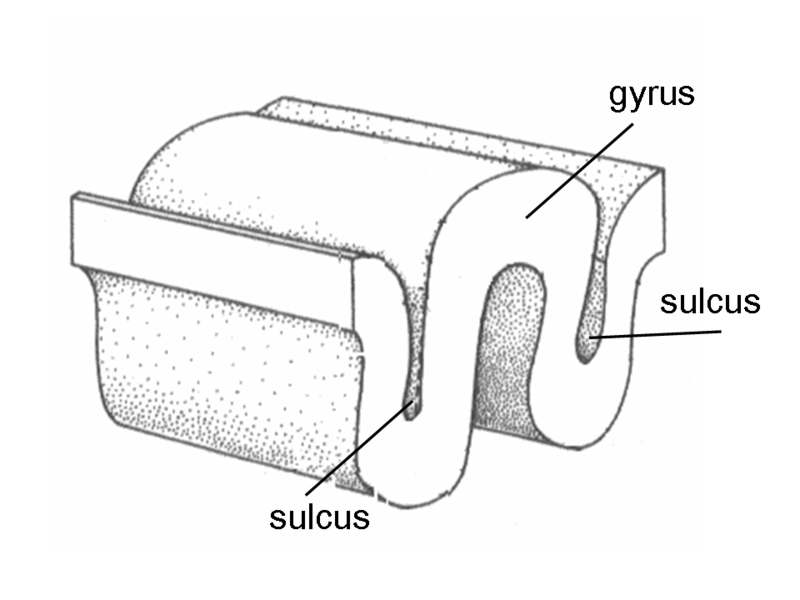
9
New cards
What is the 3 main functions of the nervous system?
Input→ Processing → Response
Receives info from environment, Processes this info and decides what to do, does the response
Example: A bear jumps out in front of you, Brain thinks you should run away, You run away.
Receives info from environment, Processes this info and decides what to do, does the response
Example: A bear jumps out in front of you, Brain thinks you should run away, You run away.
10
New cards
Foramen Magnum
The small opening at the bottom of the skull where the brain step exits.

11
New cards

Hippocampus
Plays a vital role in regulating learning, memory encoding, memory consolidation, and spatial navigation.
12
New cards
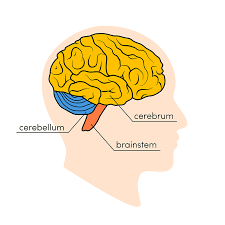
Cerebrum
The largest part of the brain. It is divided into two hemispheres, or halves, called the Cerebral ….. Controls muscle functions and also control speech, thought, emotions, reading, writing, and learning.
13
New cards
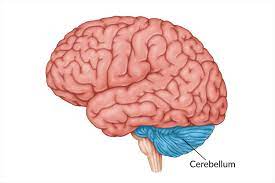
Cerebellum
It helps with the coordination and movement related to motor skills, especially involving the hands and feet. It also helps maintain posture, balance, and equilibrium
14
New cards
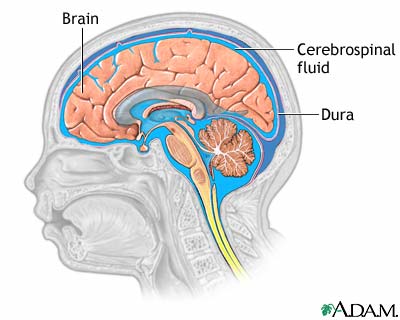
Cerebrospinal Fluid
Is made by tissue that lines the ventricles (hollow spaces) in the brain. It flows in and around the brain and spinal cord to help cushion them from injury and provide nutrients.
15
New cards
Meninges
Three layers of membranes known as _____ protect the brain and spinal cord. The delicate inner layer is the pia mater. The middle layer is the arachnoid, a web-like structure filled with fluid that cushions the brain. The tough outer layer is called the dura mater.
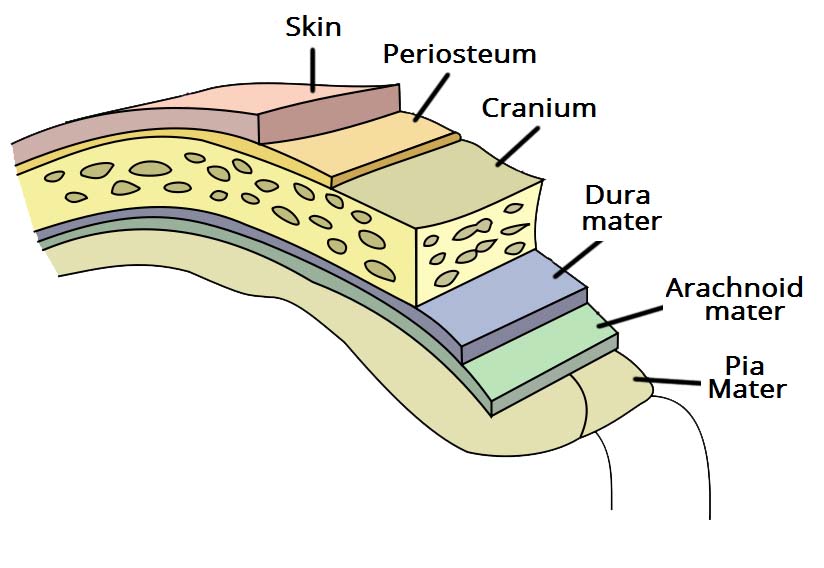
16
New cards
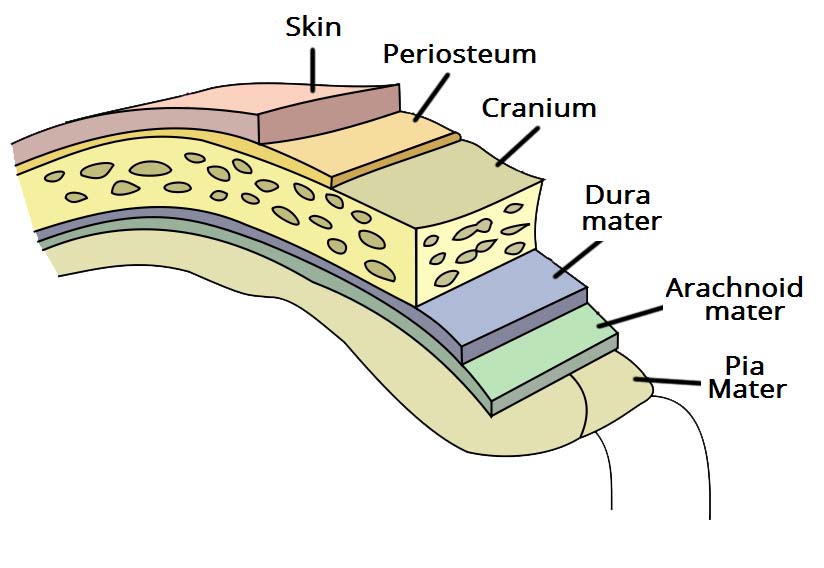
Pia Mater
It is composed of delicate connective tissue and has many tiny blood vessels. Is the only layer that clings tightly to the brain. Many blood vessels pass through this layer to supply your brain tissue with blood. It also helps contain cerebrospinal fluid
17
New cards

Dura Mater
The tough outer layer of tissue that covers and protects the brain and spinal cord and is closest to the skull. Contains a drainage system, called the Dural venous sinuses, which allows blood to leave your brain and allows cerebrospinal fluid to re-enter the circulation.
18
New cards
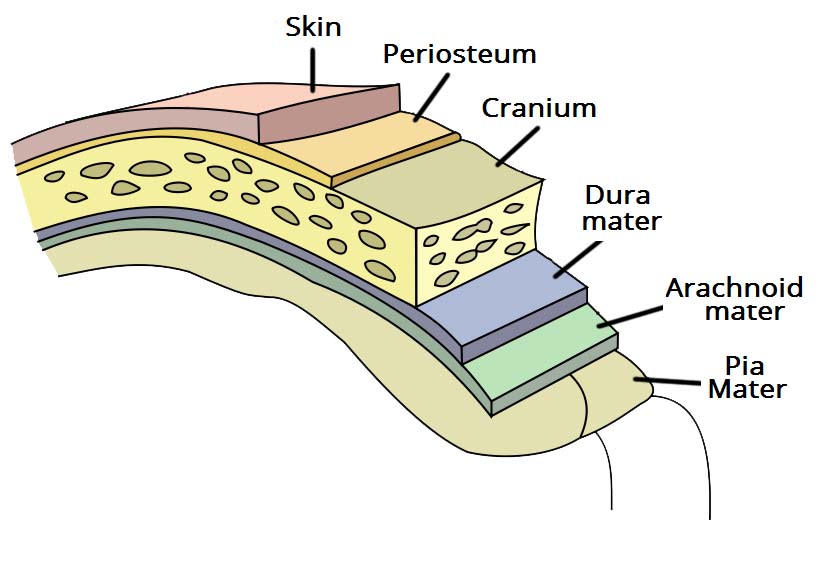
Arachnoid Mater
The middle layer of your meninges, lies directly below your dura mater. It's a thin layer that lays between your dura mater and pia mater. It doesn't contain blood vessels or nerves
19
New cards
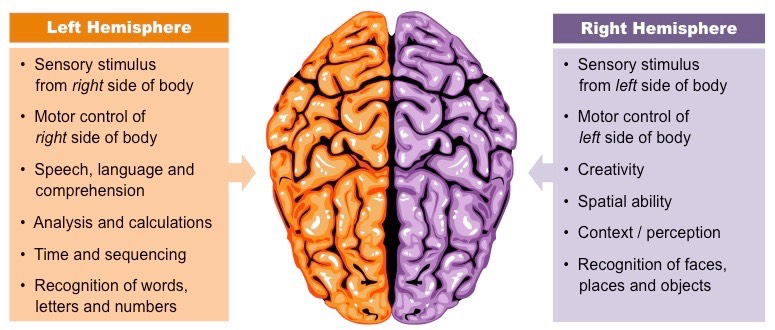
Hemispheres
One half of the cerebrum, the part of the brain that controls muscle functions and also controls speech, thought, emotions, reading, writing, and learning.
The right ___ controls the muscles on the left side of the body, and the left ________ controls the muscles on the right side of the body.
The right ___ controls the muscles on the left side of the body, and the left ________ controls the muscles on the right side of the body.
20
New cards
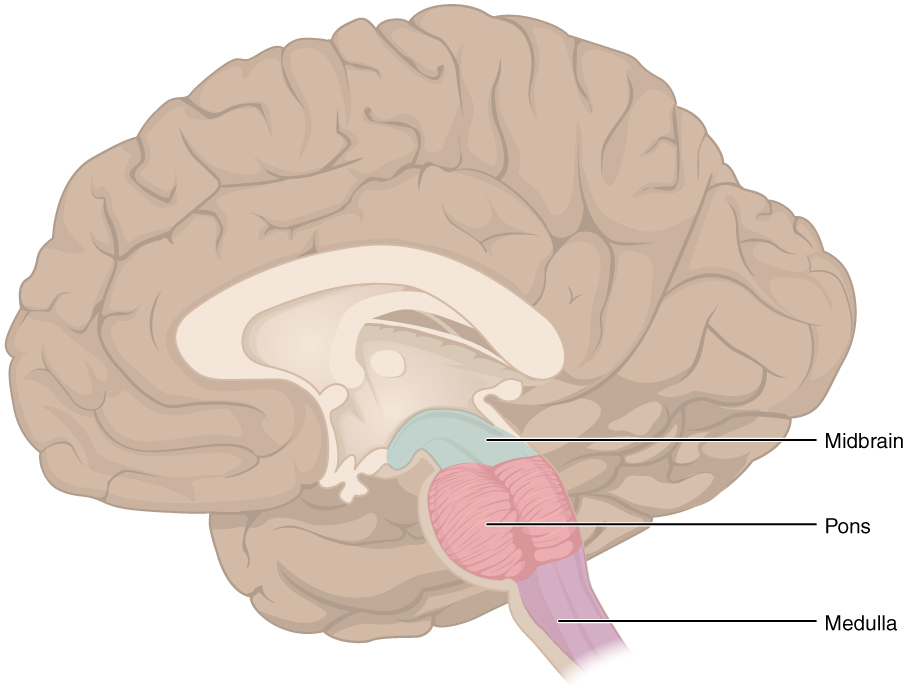
Midbrain
Is associated with vision, hearing, motor control, sleep/wake, arousal (alertness), and temperature regulation, acting as a sort of relay station for auditory and visual information.
21
New cards
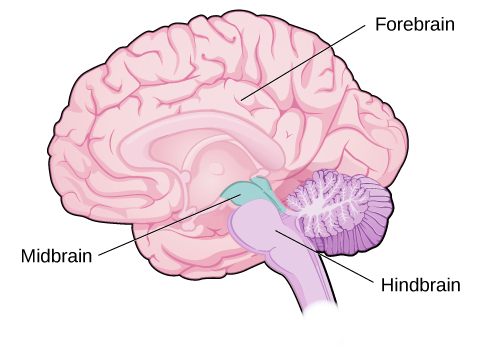
Forebrain
Is responsible for a variety of functions including receiving and processing sensory information, thinking, perceiving, producing and understanding language, and controlling motor function.
22
New cards
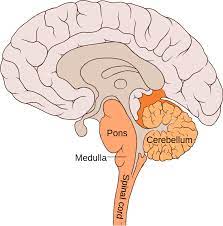
Hindbrain
Composed of the medulla, the pons, and the cerebellum. Coordinates functions that are fundamental to survival, including respiratory rhythm, motor activity, sleep, and wakefulness.
23
New cards
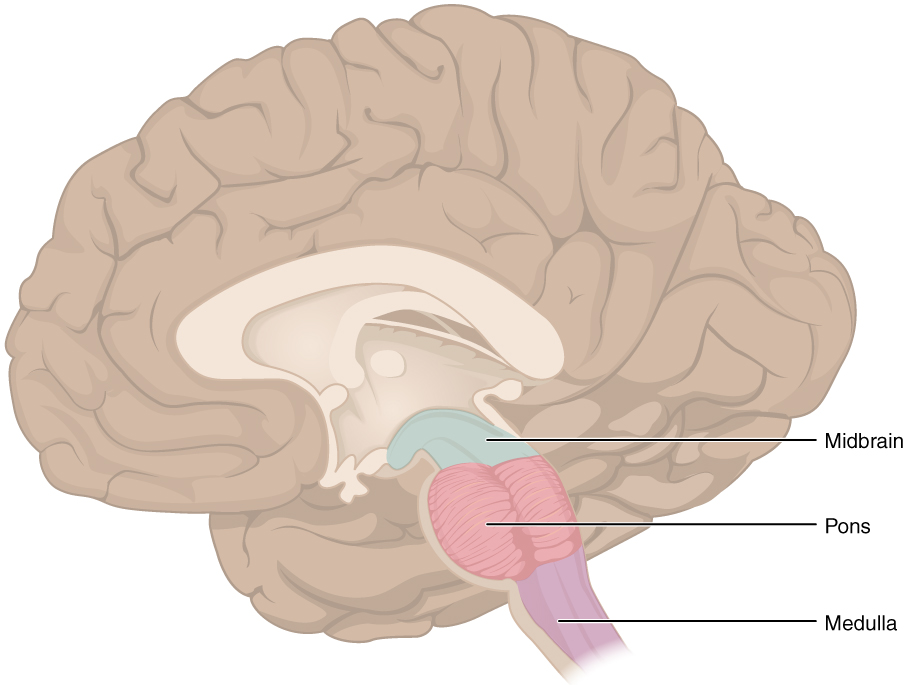
Medulla
bottom-most part of your brain. Its location means it's where your brain and spinal cord connect, making it a key conduit for nerve signals to and from your body. It also helps control vital processes like your heartbeat, breathing and blood pressure.
24
New cards

Pons
Is a part of your brainstem, a structure that links your brain to your spinal cord. It handles unconscious processes and jobs, such as your sleep-wake cycle and breathing. It also contains several junction points for nerves that control muscles and carry information from senses in your head and face.
25
New cards
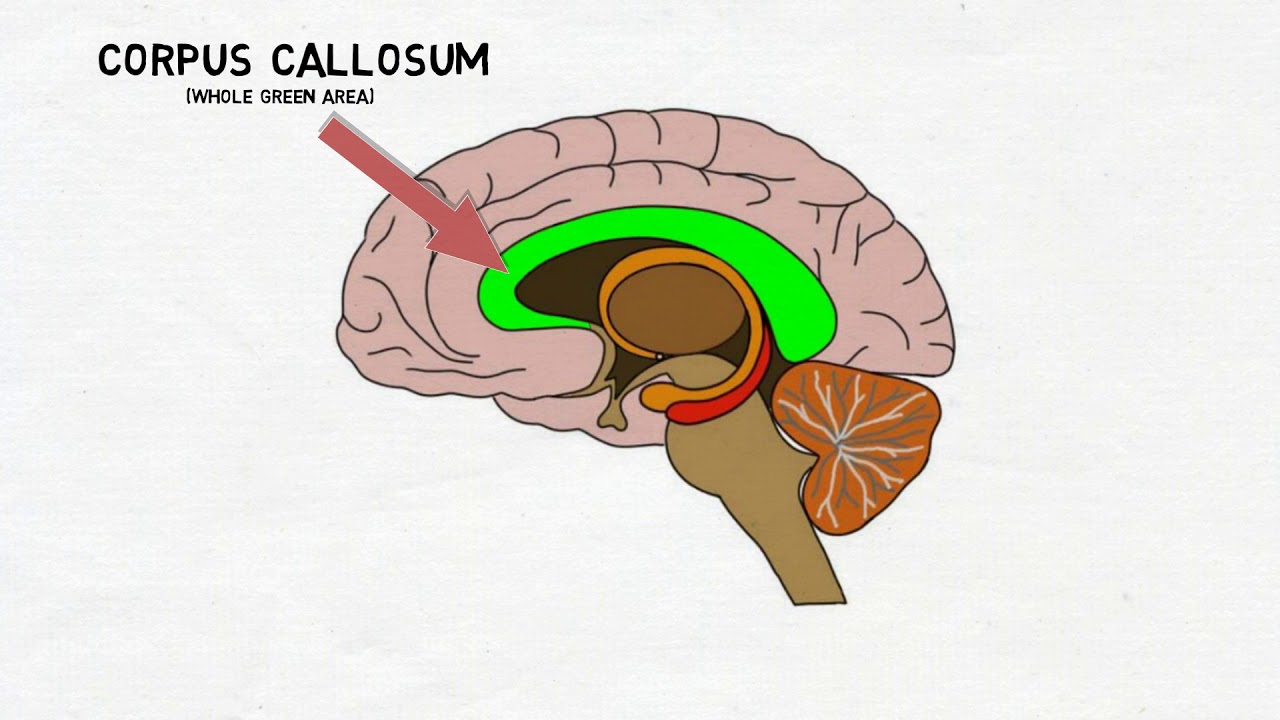
Corpus Callosum
The two hemispheres in your brain are connected by a thick bundle of nerve fibres called the ______ that ensures both sides of the brain can communicate and send signals to each other
26
New cards

Lobes of the brain
Each brain hemisphere (parts of the cerebrum) has four sections, called __: frontal, parietal, temporal and occipital. Each ____ controls specific functions.

27
New cards
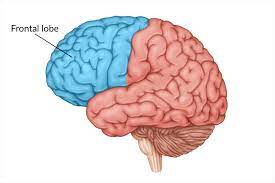
Frontal Lobe
The largest lobes in the human brain and they are also the most common region of injury in traumatic brain injury. Are important for voluntary movement, expressive language and for managing higher level executive functions
28
New cards
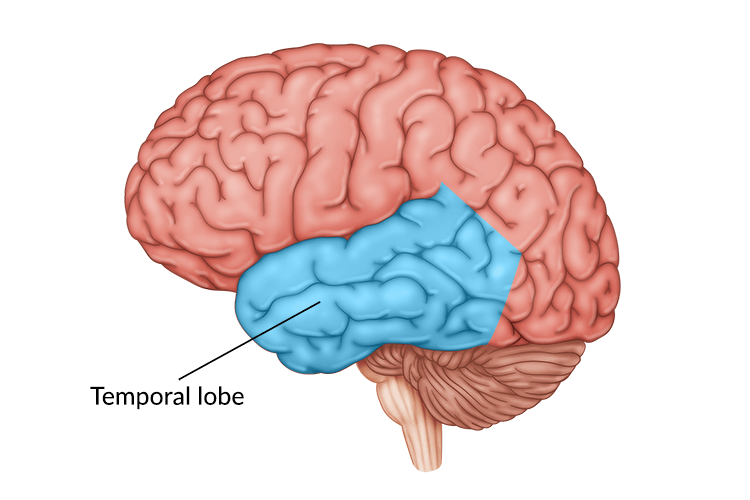
Temporal Lobe
Sits behind the ears and is the second largest lobe. They are most commonly associated with processing auditory information and encoding memory.
29
New cards
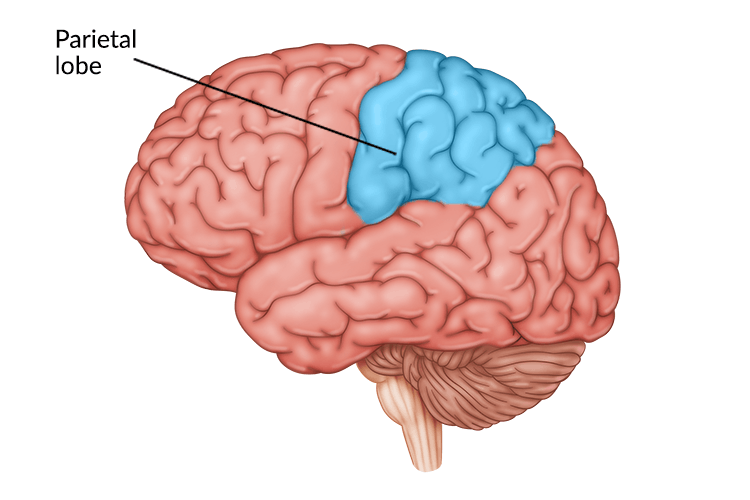
Parietal Lobe
Is one of the brain's major lobes, roughly located at the upper back area in the skull. It processes sensory information received from the outside world, mainly relating to touch, taste, and temperature. Damage leads to dysfunction in the senses.
30
New cards
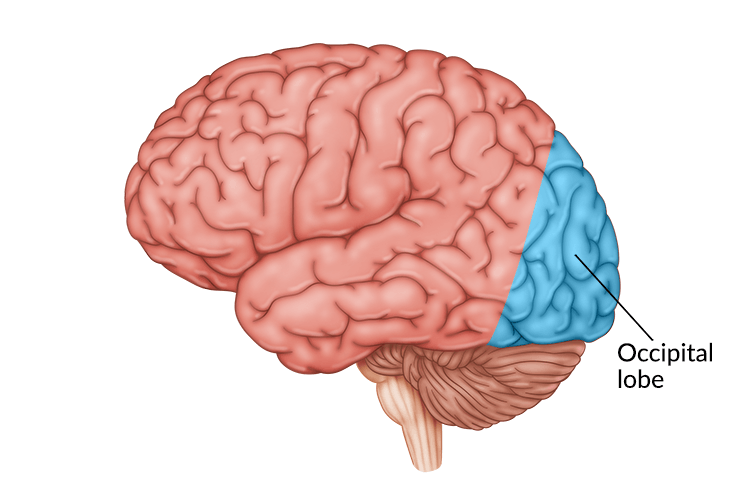
Occipital Lobe
Sits at the back of the head and are responsible for visual perception, including colour, form and motion. Damage too it can include: Difficulty with locating objects in environment. Difficulty with identifying colours
31
New cards
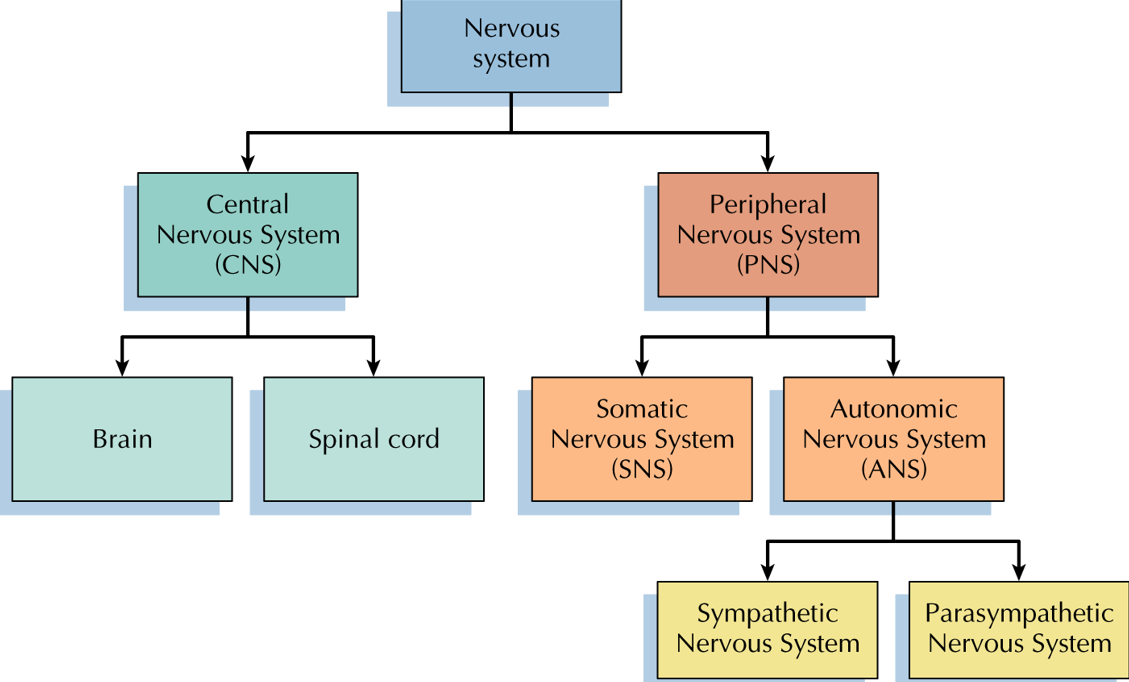
\
Different branches of the Nervous System
32
New cards
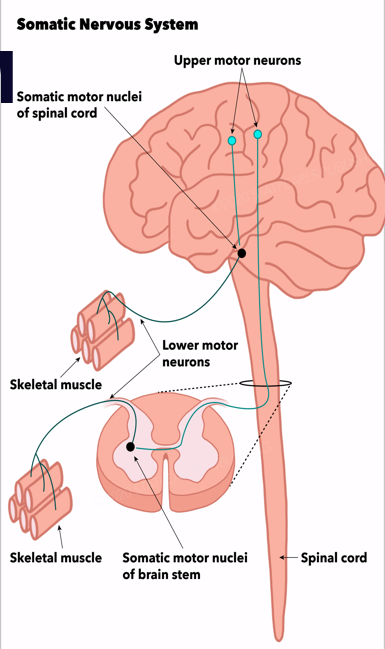
Somatic Nervous System
is a Voluntary branch of the Peripheral Nervous Syestem. Includes motor neurons that control deliberate movement of your skeletal muscles and the sensory neurons that provide conscious information about your environment.
33
New cards
Autonomic Nervous System
Connects the Central Nervous System to the body’s internal organs and glands. Contains sympathetic and parasympathetic nervous system.
34
New cards
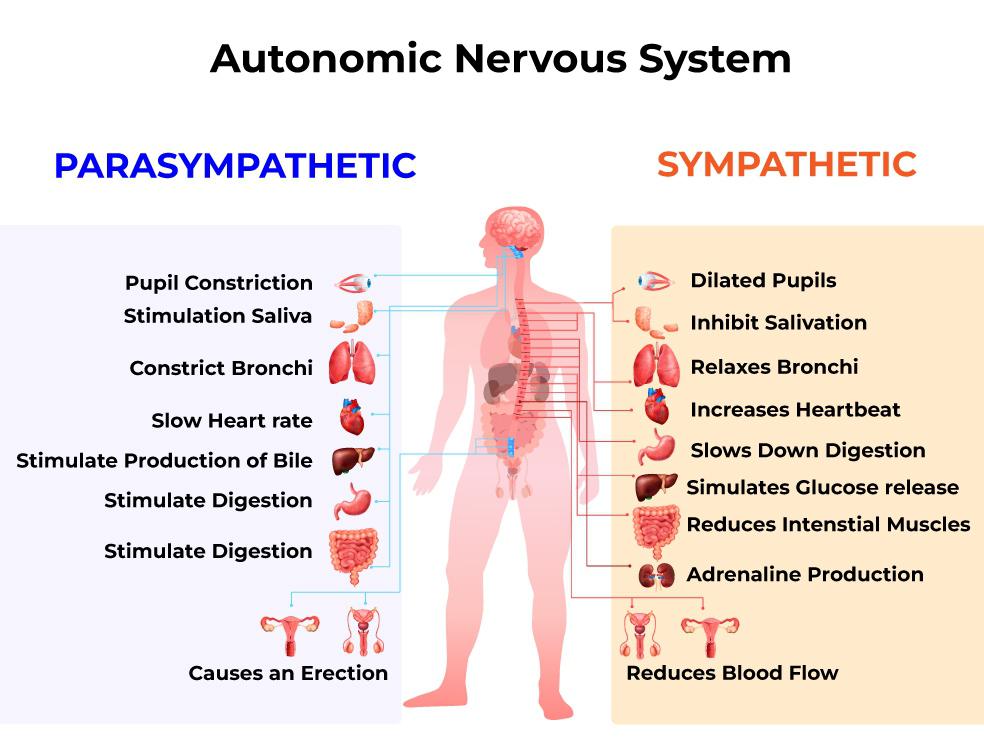
Sympathetic Nervous System (part of Autonomic Nervous System)
Helps prepare your body to respond when it senses real or perceived threat. Causes psychological responses which increase your alertness and energy levels.
* Sometimes called the ‘fight-or-flight response’ because it prepares your body to fight back or run away.
Along with hormones, adrenaline and cortisol also work to suppress bodily functions that are not necessary.
Slows digestive, immune, reproductive, growth and repair.
* Sometimes called the ‘fight-or-flight response’ because it prepares your body to fight back or run away.
Along with hormones, adrenaline and cortisol also work to suppress bodily functions that are not necessary.
Slows digestive, immune, reproductive, growth and repair.
35
New cards
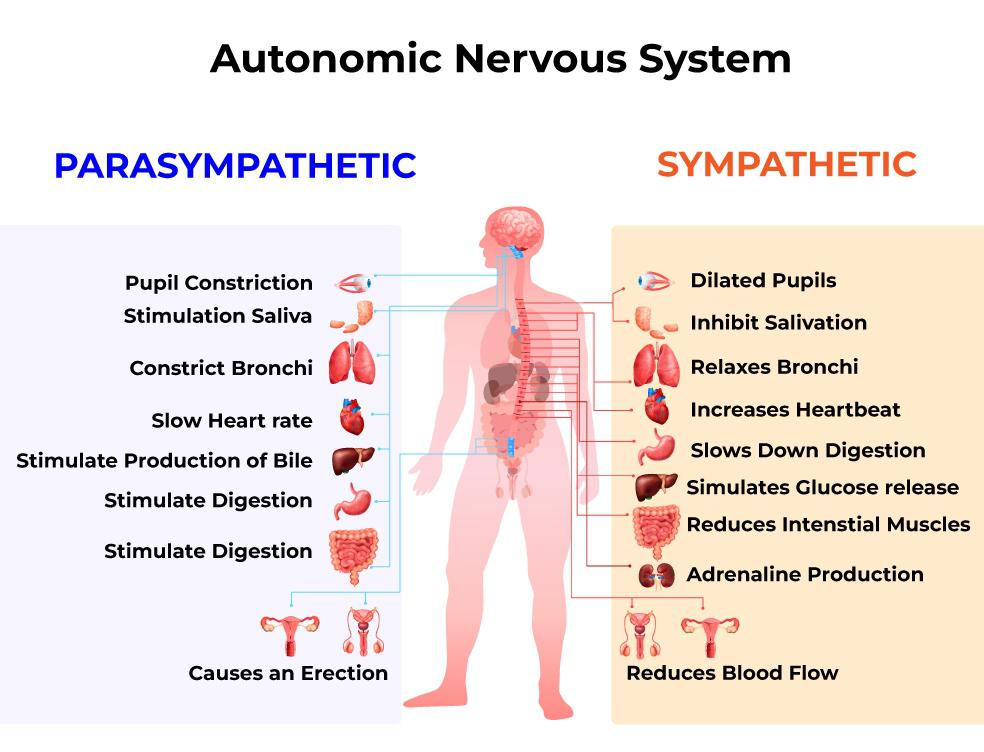
Bodily Reactions caused by Sympathetic Nervous System
* Sweat (to cool down the body)
* Breathing fast (To intake more oxygen)
* Blood pressure increase
* Heart rate increases (to deliver more blood)
* Release sugar/energy
* Eyes widen and get bigger (pupils dilate to increase field of vision)
* Breathing fast (To intake more oxygen)
* Blood pressure increase
* Heart rate increases (to deliver more blood)
* Release sugar/energy
* Eyes widen and get bigger (pupils dilate to increase field of vision)
36
New cards
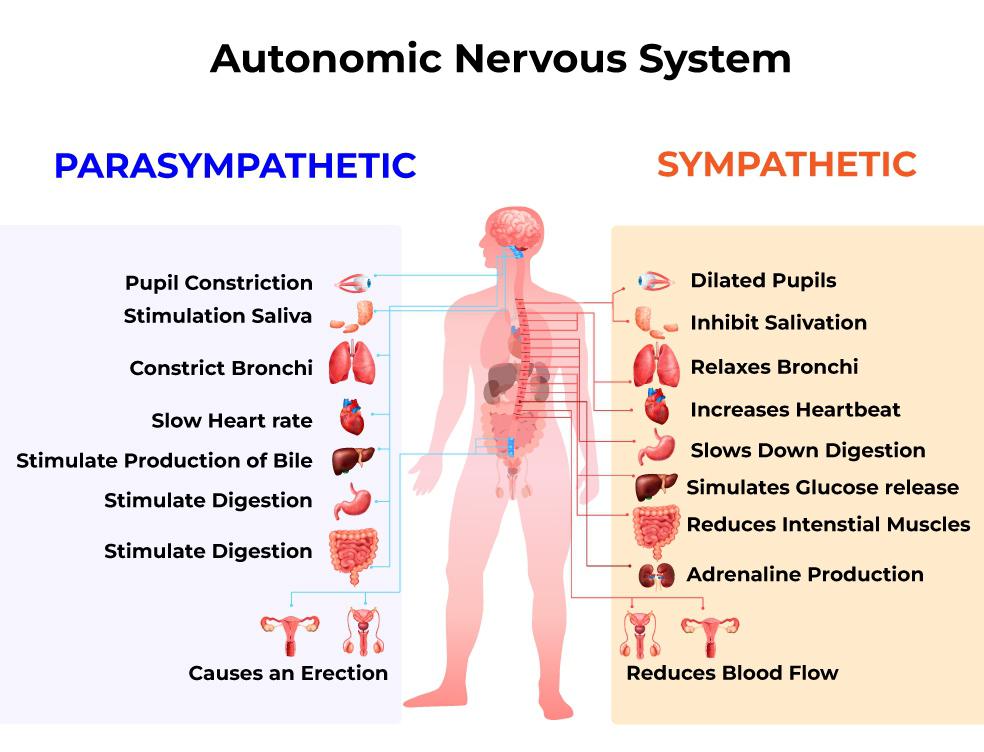
Parasympathetic Nervous System (part of Autonomic Nervous System)
\
Opposite of Sympathetic Nervous System. It relaxes all of the functions that are stimulated by the sympathetic Nervous System, while prompting the immune system, digestion and growth and repair
* Also called ‘rest-and-digest
* Help body return to normal following stress response
Opposite of Sympathetic Nervous System. It relaxes all of the functions that are stimulated by the sympathetic Nervous System, while prompting the immune system, digestion and growth and repair
* Also called ‘rest-and-digest
* Help body return to normal following stress response
37
New cards
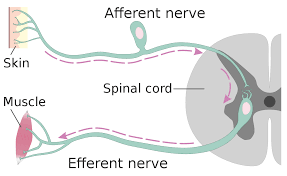
Afferent
Signals travelling **toward** the CNS (they **approach**)
38
New cards
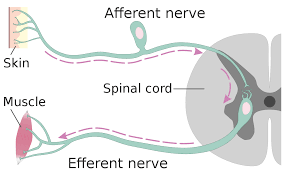
Efferent
Signals travelling **away** from the CNS (they cause an **effect**)
39
New cards
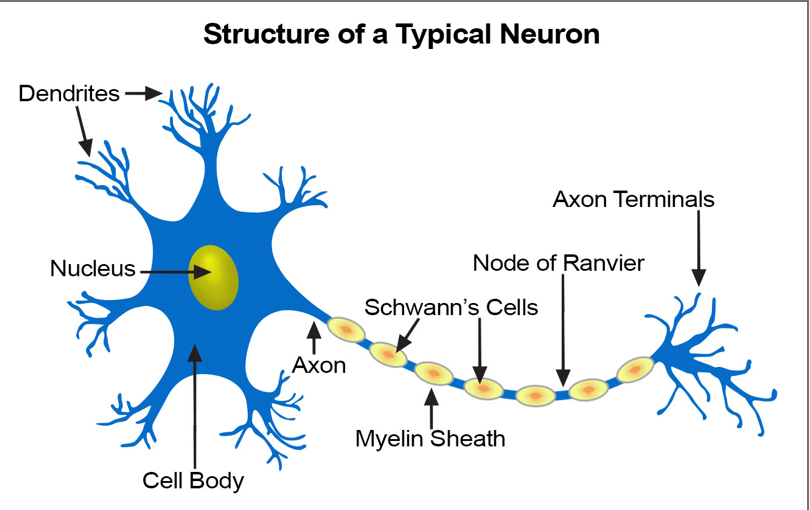
Structure of typical neuron
* Signals travel one way through a neuron
* Dendrites receive input → The cell body processes these inputs → A signal travels down the neuron to initiate a response at the axon terminals (THREE STAGE MODEL)
* Signals travel along neurons as an electro-chemical pulse which is called an action potential
\
* Dendrites receive input → The cell body processes these inputs → A signal travels down the neuron to initiate a response at the axon terminals (THREE STAGE MODEL)
* Signals travel along neurons as an electro-chemical pulse which is called an action potential
\
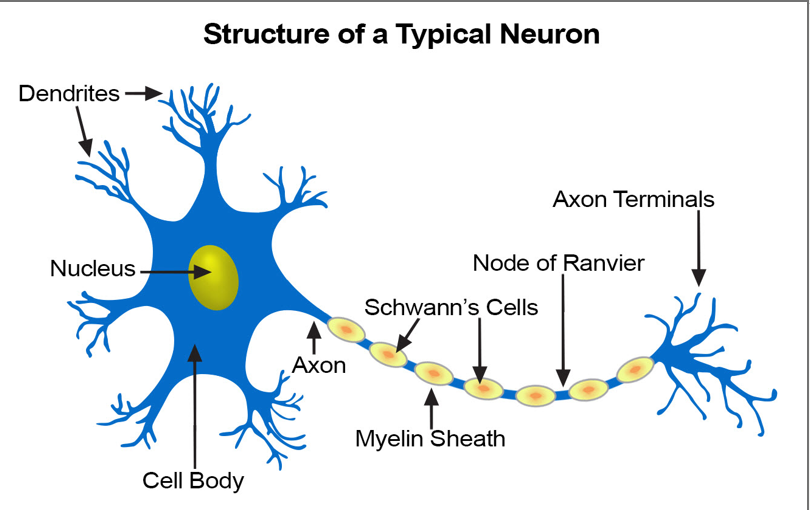
40
New cards
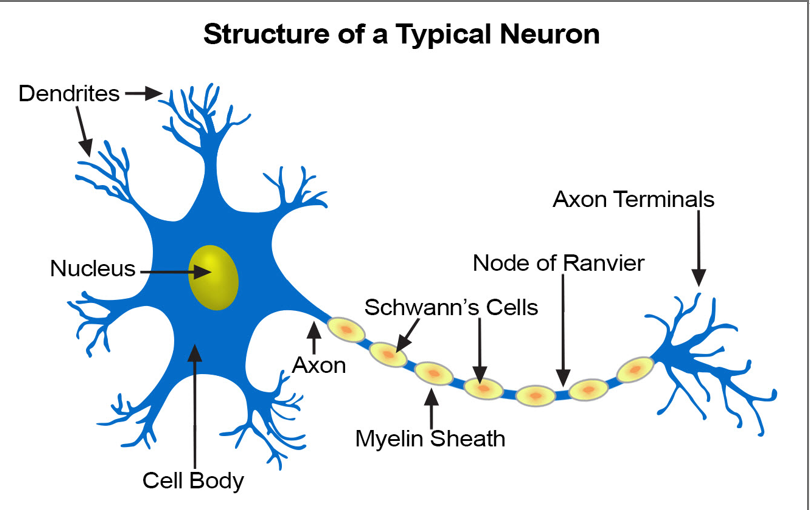
Parts of the Neuron
Cell Body: (soma) The cell body contains genetic information, maintains the neuron's structure, and provides energy to drive activities
Myelin Sheath: Fatty layer which protects Schwann cells
Schwann Cells: Form insulation, prevents voltage loss and speeds up signal
Axon: where electrical impulses from the neuron travel away to be received by other neurons
Axon Terminals: Sends off data, makes contact with muscle or other cells
Nodes of Ranvier: Gap in between the myelin sheath
Myelin Sheath: Fatty layer which protects Schwann cells
Schwann Cells: Form insulation, prevents voltage loss and speeds up signal
Axon: where electrical impulses from the neuron travel away to be received by other neurons
Axon Terminals: Sends off data, makes contact with muscle or other cells
Nodes of Ranvier: Gap in between the myelin sheath
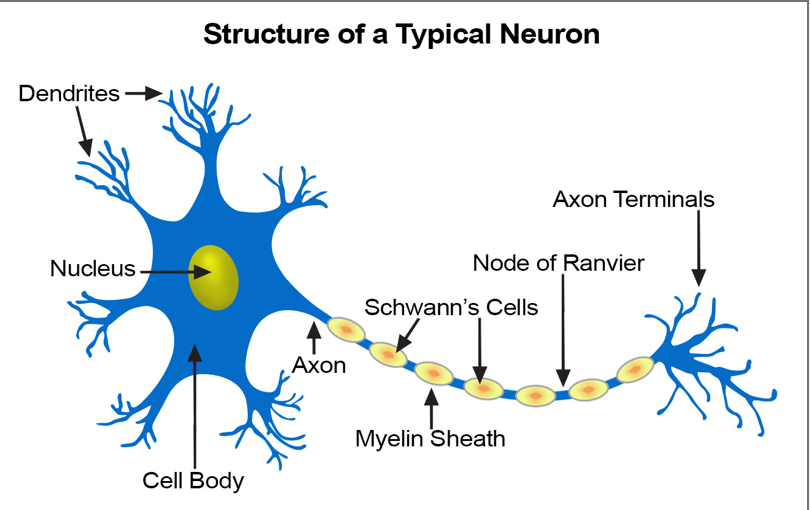
41
New cards
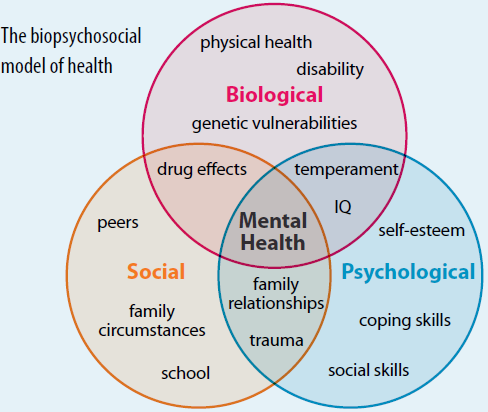
Biopsychosocial Model
Look at the interconnection between biology, psychology, and socio-environmental factors.
42
New cards
Effect of Caffeine
Caffeine is a stimulant, which means it increases activity in your brain and nervous system. It also increases the circulation of chemicals such as cortisol and adrenaline in the body. In small doses, caffeine can make you feel refreshed and focused.
43
New cards
Effect of Cocaine
How cocaine affects the nervous system is largely related to neurotransmitter production. When cocaine is ingested, it increases the production of dopamine, a neurotransmitter that produces feelings of euphoria and pleasure. This feeling is what draws people into a cycle of substance abuse. Cocaine disrupts the body’s natural dopamine production, flooding the brain cells. The brain’s reward system is then activated, which can lead a person to seek more cocaine in order to feel that euphoria and pleasure again.
44
New cards
Investigation Design - Experimental
Researchers manipulate and control one variable (the independent variable) and observe the effect it has on the other variables (the dependent variables) while keeping all other variables constant.
A common feature of experimental research is the random allocation of participants into treatment and control groups.
45
New cards
What are the strengths and weaknesses of an experimental investigation design?
An experimental investigation design allows for control over variables and can establish cause-and-effect relationships. However, it may not be feasible or ethical to manipulate certain variables, and the results may not be generalizable to real-world situations.
46
New cards
Investigation Design - Observational
**An observational investigation design is a research method where the researcher observes and records the behavior of individuals or groups without manipulating any variables. This type of design is often used in social sciences and can be either structured or unstructured**
47
New cards
What are the strengths and weaknesses of an observational investigation design?
**Strengths of Observational Investigation Design:**
1. Provides a natural setting for the study of behaviour.
2. Allows for the collection of data in real-time.
3. Can be used to study behaviours that are difficult to manipulate.
4. Can be used to generate hypotheses for further research.
5. Can be used to study behaviour in a variety of settings.
**Weaknesses of Observational Investigation Design:**
1. Observer bias can affect the accuracy of the data collected.
2. Observer effects can occur when the presence of the observer affects the behavior being studied.
3. Limited control over extraneous variables that may influence the behavior being studied.
4. Difficult to replicate the study due to the unique nature of the setting and participants.
5. Ethical concerns may arise if the behavior being studied is sensitive or private.
1. Provides a natural setting for the study of behaviour.
2. Allows for the collection of data in real-time.
3. Can be used to study behaviours that are difficult to manipulate.
4. Can be used to generate hypotheses for further research.
5. Can be used to study behaviour in a variety of settings.
**Weaknesses of Observational Investigation Design:**
1. Observer bias can affect the accuracy of the data collected.
2. Observer effects can occur when the presence of the observer affects the behavior being studied.
3. Limited control over extraneous variables that may influence the behavior being studied.
4. Difficult to replicate the study due to the unique nature of the setting and participants.
5. Ethical concerns may arise if the behavior being studied is sensitive or private.
48
New cards
Investigation Design - Quantitative
observational
observational
Strengths:
* Allows for the collection of large amounts of data
* Can establish cause-and-effect relationships
* Results are often generalizable to larger populations
* Can be replicated to test for reliability
Weaknesses:
* Cannot establish causation with certainty
* May be subject to bias or confounding variables
* May not capture the full complexity of a phenomenon
* May be limited by the quality of the data collected
* Allows for the collection of large amounts of data
* Can establish cause-and-effect relationships
* Results are often generalizable to larger populations
* Can be replicated to test for reliability
Weaknesses:
* Cannot establish causation with certainty
* May be subject to bias or confounding variables
* May not capture the full complexity of a phenomenon
* May be limited by the quality of the data collected
49
New cards
Subjective Data
Subjective data refers to information that is based on personal opinions, interpretations, and feelings rather than on facts or evidence. It is often obtained through interviews, surveys, or observations of individuals and can include things like pain levels, emotions, and perceptions. Subjective data is important in healthcare and other fields where understanding a person's perspective is crucial to providing effective care or making informed decisions.
50
New cards
Objective Data
Objective data refers to factual and measurable information that is obtained through observation, physical examination, and diagnostic tests. It is free from personal biases and opinions, and is based solely on observable and measurable phenomena. Objective data is commonly used in healthcare to assess a patient's condition and to make clinical decisions. Examples of objective data include vital signs, laboratory results, and physical examination findings.
51
New cards
Quantitative Data
Quantitative data is numerical data that can be measured and analysed using mathematical or statistical methods. It is used to quantify or measure variables and can be expressed in terms of numbers, percentages, or ratios. Examples of quantitative data include height, weight, age, test scores, and income.
52
New cards
Qualitative Data
Qualitative data is a type of data that is non-numerical and is collected through methods such as interviews, observations, and focus groups. It is used to gain an understanding of underlying reasons, opinions, and motivations behind a particular phenomenon. Qualitative data is often descriptive in nature and is analysed through techniques such as content analysis and thematic analysis.
53
New cards
Independent Variable
An independent variable is a variable that is manipulated or changed by the researcher in an experiment to observe its effect on the dependent variable. It is the variable that is being tested or studied to see if it has an impact on the outcome of the experiment.
54
New cards
Dependent Variable
A dependent variable is a variable in an experiment that is being measured or observed and is expected to change in response to the independent variable. It is also known as the response variable.
55
New cards
Controlled Variable
A controlled variable is a factor or condition in an experiment that is kept constant and unchanged in order to observe the effect of the independent variable on the dependent variable. This helps to ensure that any changes observed in the dependent variable are due to the independent variable and not any other factors.
56
New cards
Ethical Considerations - IVCARD
Informed Consent, Voluntary Participation, Confidentiality, Accurate Reporting, Right to withdrawal, Do no harm.
57
New cards
How to write a testable hypothesis
To write a testable hypothesis, follow these steps:
1. Identify the problem or question you want to investigate.
2. Conduct background research on the topic.
3. Formulate a tentative explanation or prediction based on the research.
4. Make sure the hypothesis is specific, clear, and testable.
5. Design an experiment or study to test the hypothesis.
6. Collect and analyze data.
7. Draw conclusions based on the results.
Remember, a good hypothesis should be falsifiable, meaning it can be proven false through experimentation or observation.
1. Identify the problem or question you want to investigate.
2. Conduct background research on the topic.
3. Formulate a tentative explanation or prediction based on the research.
4. Make sure the hypothesis is specific, clear, and testable.
5. Design an experiment or study to test the hypothesis.
6. Collect and analyze data.
7. Draw conclusions based on the results.
Remember, a good hypothesis should be falsifiable, meaning it can be proven false through experimentation or observation.
58
New cards
Amygdala
The amygdala is a part of the brain that plays a key role in processing emotions, particularly fear and aggression. It is also involved in the formation and retrieval of emotional memories.
59
New cards
Striatum
The striatum is a region in the brain that plays a key role in controlling movement and reward processing. It receives input from other brain regions and helps to coordinate motor movements, as well as regulate motivation and decision-making related to rewards.
60
New cards
Pre-Frontal Cortex
The prefrontal cortex is responsible for a variety of complex cognitive behaviors, including decision making, personality expression, social behavior, and moderating social behavior. It is also involved in working memory, planning, and attention.
61
New cards
Psychopathy
Psychopathy is a personality disorder characterized by persistent antisocial behaviour, impaired empathy and remorse, and bold, disinhibited, and egotistical traits. It is often associated with criminal behaviour, although not all psychopaths engage in criminal activities. Psychopathy is considered a mental illness and is diagnosed using standardized assessment tools.
62
New cards
Schizophrenia
Schizophrenia is a mental disorder characterized by a range of symptoms, including delusions, hallucinations, disorganized thinking and behavior, and a lack of motivation and emotion. It affects about 1% of the population and typically develops in the late teenage years or early adulthood. The exact cause of schizophrenia is unknown, but it is believed to be a combination of genetic, environmental, and brain chemistry factors. Treatment often involves a combination of medication and therapy.
63
New cards
How is schizophrenia related to crime?
Research suggests that individuals with schizophrenia are at a slightly higher risk of committing crimes compared to the general population. However, it is important to note that the vast majority of individuals with schizophrenia are not violent and are more likely to be victims of crime than perpetrators. The relationship between schizophrenia and crime is complex and influenced by various factors such as substance abuse, lack of treatment, and social disadvantage.
64
New cards
Secure Attachment
Secure attachment is classified by children who show some distress when their caregiver leaves but are able to compose themselves quickly when the caregiver returns. Children with secure attachment feel protected by their caregivers, and they know that they can depend on them to return.
65
New cards
Anxious Ambivalent Attachment
Anxious Ambivalent attachment is classified by children who show distress when their caregivers leaves, and once they return they continue to push away the parent and be aggressive in nature. Leading to low self esteem and a strong fear of rejection.
66
New cards
Anxious Avoidant Attachment
Anxious Avoidant Attachment is classified by children who show distress when their caregivers leave, and once they return they are avoidant, keeping their arms down and sulking. Tending to lash out emotionally with people who try to get close and connect with them.
67
New cards
Lie Detector/ Polygraph
A polygraph is a machine that is used by law enforcement to test the physiological responses of individuals to certain questions.
Polygraphs are used under the theory that most people do not lie or deceive without some feelings of anxiety or nervousness. This stems from the idea that most people either feel bad that they are lying or are afraid that they will get caught or will be in trouble if they lie. It is this fear and guilt that produces the anxiety and nervousness. When a person feels this way they exhibit difficult to detect involuntary physiological changes that can, theoretically, be detected with a polygraph.
The physiological systems that a polygraph focuses on are heart rate, blood pressure, respiratory rate, and how much a person sweats.
Polygraphs are used under the theory that most people do not lie or deceive without some feelings of anxiety or nervousness. This stems from the idea that most people either feel bad that they are lying or are afraid that they will get caught or will be in trouble if they lie. It is this fear and guilt that produces the anxiety and nervousness. When a person feels this way they exhibit difficult to detect involuntary physiological changes that can, theoretically, be detected with a polygraph.
The physiological systems that a polygraph focuses on are heart rate, blood pressure, respiratory rate, and how much a person sweats.
68
New cards
Limitations of a lie detector
Good liars can control their breathing and other physiological factors. Similarly on the other hand, a person might just be very naturally nervous or sweaty due to be attached to a lie detector.
•Criminals have been able to beat the polygraph machine by purposely creating highly emotional responses to the control questions. This means their polygraph reading just shows that their normal level of arousal is higher than usual.
•Criminals have been able to beat the polygraph machine by purposely creating highly emotional responses to the control questions. This means their polygraph reading just shows that their normal level of arousal is higher than usual.
69
New cards
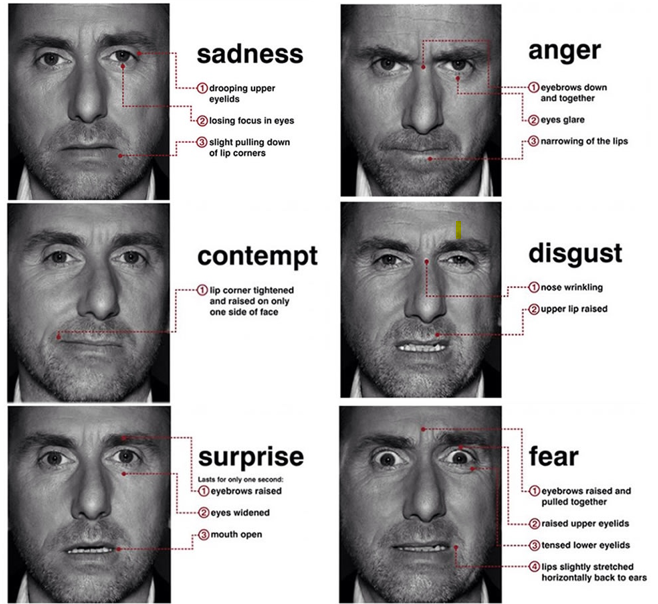
Lie Detection- Expressive behaviours
•Facial expression are often used by detectives to reveal liars or how a criminal honestly feels about a situation.
•One way of detecting lies is to study the ‘liar’ for **micro expressions.**
•Micro expressions are very fast changes in one’s face to depict their true emotion, even though they are trying to hide it behind a ‘mask’ of another emotion.
•Avoiding eye contact, or holding it without blinking
•Eyes darting back and forth shows they are nervous or anxious
•A burst of rapid blinking (5 or 6 times)
•Closing eyes for longer than one second at a time
•__Emotions are also expressed by changes in body posture.__
•- Slouching, Standing Erect, The way we hold our heads, The way we sit, Whether or not we fold our arms, Fidgeting or being overly still
Also through how things are said, speed, volume pitch
70
New cards
Body Language of a liar
A liar may display the following gestures before answering a question:
•They may touch or scratch their nose, play with their hair or press their fingers to their lips.
•They may hide their mouth
•They may jerk their head back, bow their head, or tilt it to one side.
• They may cover vulnerable areas like the chest, throat or abdomen with their hand.
•They may shuffle their feet, or rock back and forth